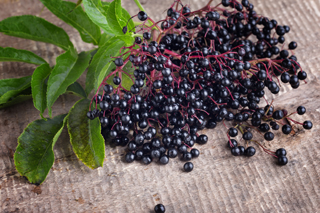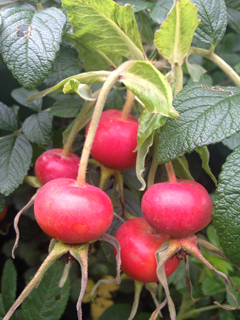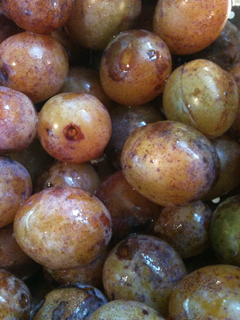 Hello again! Before we continue, I thought I’d quickly tackle the do’s and don’ts of foraging. I always say at the beginning of a foraging walk that all you really need is common sense. This covers everything from not uprooting any plants unless you have the land owner’s permission because you could be uprooting rare plants and you want to be able to keep harvesting from these plants in the future.
Hello again! Before we continue, I thought I’d quickly tackle the do’s and don’ts of foraging. I always say at the beginning of a foraging walk that all you really need is common sense. This covers everything from not uprooting any plants unless you have the land owner’s permission because you could be uprooting rare plants and you want to be able to keep harvesting from these plants in the future.
Keep hygiene in mind – if you gather wild food from a dog walking area, try and gather above ‘dog-leg-cocking height’ and if you are picking seaweeds and shellfish, you want to gather them from the cleanest source you possibly can.
If you are unsure of a plant, don’t eat it – it isn’t worth the risk. Join an expert on a foraging walk, try and identify it with books or the internet, perhaps take photos and get a second opinion. If you are a beginner, just start small. Get to know a handful of easily recognisable plants, which parts to use, how to use them, any recipes where they work really well… then build from there. I’m still learning and I’ve been foraging for nearly a quarter of a century (ouch, that makes me sound old!). Don’t rush it, it isn’t a race and the best thing to do is to get to really know plants one by one.
So what have I been out collecting? I’ve been making the most of honeysuckle, by making the jelly for my hedgerow trifle and by making honeysuckle and orange syrup which goes nicely in cocktails. Nettles have gone to seed which is worth collecting because they are rich in micronutrients and act as an energy boost for the whole body (as well as being an aphrodisiac!). To collect them, either use a bowl and a fork and drag the seeds into the bowl, or snip off stems and let them dry which is useful if you are storing the seeds.
 Eat them raw, toast them, mix them into bread, crackers or sprinkle them onto salads, desserts, smoothies – you name it! I like eating them fresh off the plant when I am out on walks. Talking of seeds, Himalayan balsam (Impatiens glandulifera) is in flower and starting to go to seed. The flowers can make an excellent pink jam and the seeds are very versatile, if you can catch them before they explode everywhere! They can be eaten raw or toasted and if you get enough of them, try making vegetarian burgers with them.
Eat them raw, toast them, mix them into bread, crackers or sprinkle them onto salads, desserts, smoothies – you name it! I like eating them fresh off the plant when I am out on walks. Talking of seeds, Himalayan balsam (Impatiens glandulifera) is in flower and starting to go to seed. The flowers can make an excellent pink jam and the seeds are very versatile, if you can catch them before they explode everywhere! They can be eaten raw or toasted and if you get enough of them, try making vegetarian burgers with them.
Blackberries are ripening up nicely and there are some fantastic, large juicy ones about. Blackberries are so versatile and make the best cakes, cordials, liqueurs, wine and even balsamic-like syrup. If I could capture the perfect blackberry taste in a perfume, I would wear it always (along with fig leaf essence – that would be my perfect perfume).Even elderberries are ripening up already. Elder gets its name from the Anglo-Saxon word ‘aeld’ which means fire. This is because the stems are hollow and were used to blow oxygen onto fires to increase the heat. Elderberries are excellent at warding off coughs, colds and sore throats and make a delicious syrup. It is best not to eat elderberries raw as they can cause stomach upsets but cooking them by simmering or boiling helps prevent this.
 September is probably my favourite time of the year. I got married in September – we were meant to go to the Scillies but the weather was so bad we couldn’t go, so our honeymoon was exploring Cornwall. I was desperate to find wild plums and with a little research found some fantastic spots for plum-scrumping! If you find any plums, try a nibble to see if they are good eaters or better for making jams, wine or sauces. At this same time, bilberries are ripening nicely. If you recognise the indistinctive plant, it is worth crouching down low and looking underneath the leaves to find the bilberries.
September is probably my favourite time of the year. I got married in September – we were meant to go to the Scillies but the weather was so bad we couldn’t go, so our honeymoon was exploring Cornwall. I was desperate to find wild plums and with a little research found some fantastic spots for plum-scrumping! If you find any plums, try a nibble to see if they are good eaters or better for making jams, wine or sauces. At this same time, bilberries are ripening nicely. If you recognise the indistinctive plant, it is worth crouching down low and looking underneath the leaves to find the bilberries.
Another delicious fruit you must get your hands on is Japanese rose hips, also known as the Ramana’s rose (Rosa rugosa). At this time of year, you get a double whammy of the edible late rose petals and the fat, juicy hips. Try eating the delicately flavoured petals or try making a heavenly rose petal jelly. With the hips, these have plenty of flesh on them unlike other rosehips so they can be eaten raw, but as with other hips you must remove the hairy seeds before making syrup. An excellent source of vitamin C, the syrup is perfect for drizzling on yoghurt, ice cream or taking by the spoonful to ward off colds.
4 large plums or 8-10 small ones (you can use damsons too)
2 cups of water
1 inch of fresh ginger, peeled and minced
1 clove of garlic, peeled and minced
2 spring onions, chopped
1 small hot chilli, finely chopped (optional)
½ tbsp sesame oil
1 tbsp soya sauce
1 tbsp white wine vinegar
1 tsp Chinese 5 spice
1 tbsp soft brown sugar
Seasoning
Slice the plums in half and remove the stones. Put the fruits in a saucepan with the water, ginger, garlic, spring onions and chilli. Bring the pan to a medium heat and gently simmer until the plums are falling apart which takes about 10-15 minutes. Mash it up with a potato masher and pass it through a sieve, keeping the liquid and discarding the rest. Return the liquid to the saucepan and on a low heat, add the sesame oil, soya sauce, vinegar, Chinese 5 spice and brown sugar. Simmer gently, allowing the sauce to thicken up for about 10 minutes. Take the saucepan off the heat and leave it to cool. Once it is cool, season to taste. N.B. The smell and taste of the sauce when hot is quite different to when it has cooled. Use and store in the fridge for about a week.


